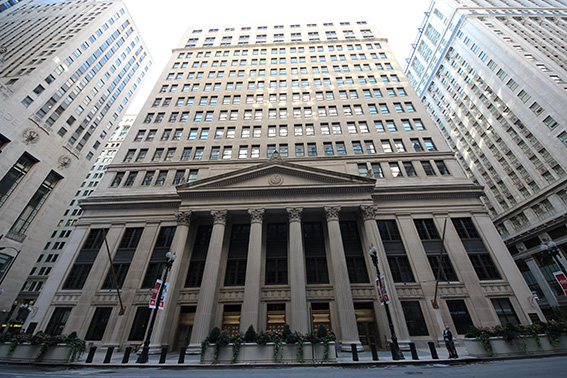This summer, the US economy enjoyed the easiest financial conditions of the post-crisis era. Those days are probably over.
Financial stress is rising, according to gauges maintained by the Federal Reserve Banks of Chicago and St. Louis, as well as measures compiled by Goldman Sachs Group Inc. and Bank of America Merrill Lynch, Bloomberg reported Wednesday.
The deterioration reflects tightening credit conditions for companies, higher stock-market volatility and a stronger dollar. Put those elements together, and the boost to the economy provided by financial markets is fading.
“We’re seeing financial conditions that are broadly supportive of growth, but pretty meaningfully less so than they were,” said Matthew Luzzetti, a New York-based economist at Deutsche Bank Securities Inc. With the Fed’s program of bond purchases winding down this month, the market’s focus shifting toward the prospect of Fed interest-rate increases and the dollar poised to continue rising, “all of those things probably point toward some tightening” of conditions going forward.
The 4.1 percent rise in the trade-weighted US dollar since June 30 is a key reason for the less-accommodative landscape and could reduce US economic growth by 0.2 percentage point during the next year, according to Jan Hatzius, chief economist at Goldman Sachs in New York.
The Goldman Sachs Financial Conditions Index was 99.55 on Oct. 10, up from a post-crisis low of 99.17 on July 1. Higher readings point to tighter conditions; it peaked at 102.96 during the recession.
Expansion Risks
In response, the Fed may push back the timing of its first rate increase since 2006 or raise rates more slowly once increases begin. Fed officials express growing concern about risks to the US expansion posed by slowing overseas growth, which may reduce demand for American exports, along with a stronger dollar, which could keep a lid on inflation.
The central bank has held its benchmark federal funds rate near zero since 2008 to combat the effects of the worst recession in nearly 80 years. Most members of the policy-setting Federal Open Market Committee said at their September meeting that the first increase should come before the end of 2015 as the labor market improves.
“You could argue, with the unemployment rate at 5.9 percent, things are getting better. The economy is growing at 3 percent. The Fed or any central bank should be hiking rates very soon,” said David Woo, head of global rates and currencies at Bank of America Merrill Lynch in New York. “However, if the dollar is strengthening, that already leads to a tightening of monetary conditions,” which “makes higher interest rates less necessary.”


